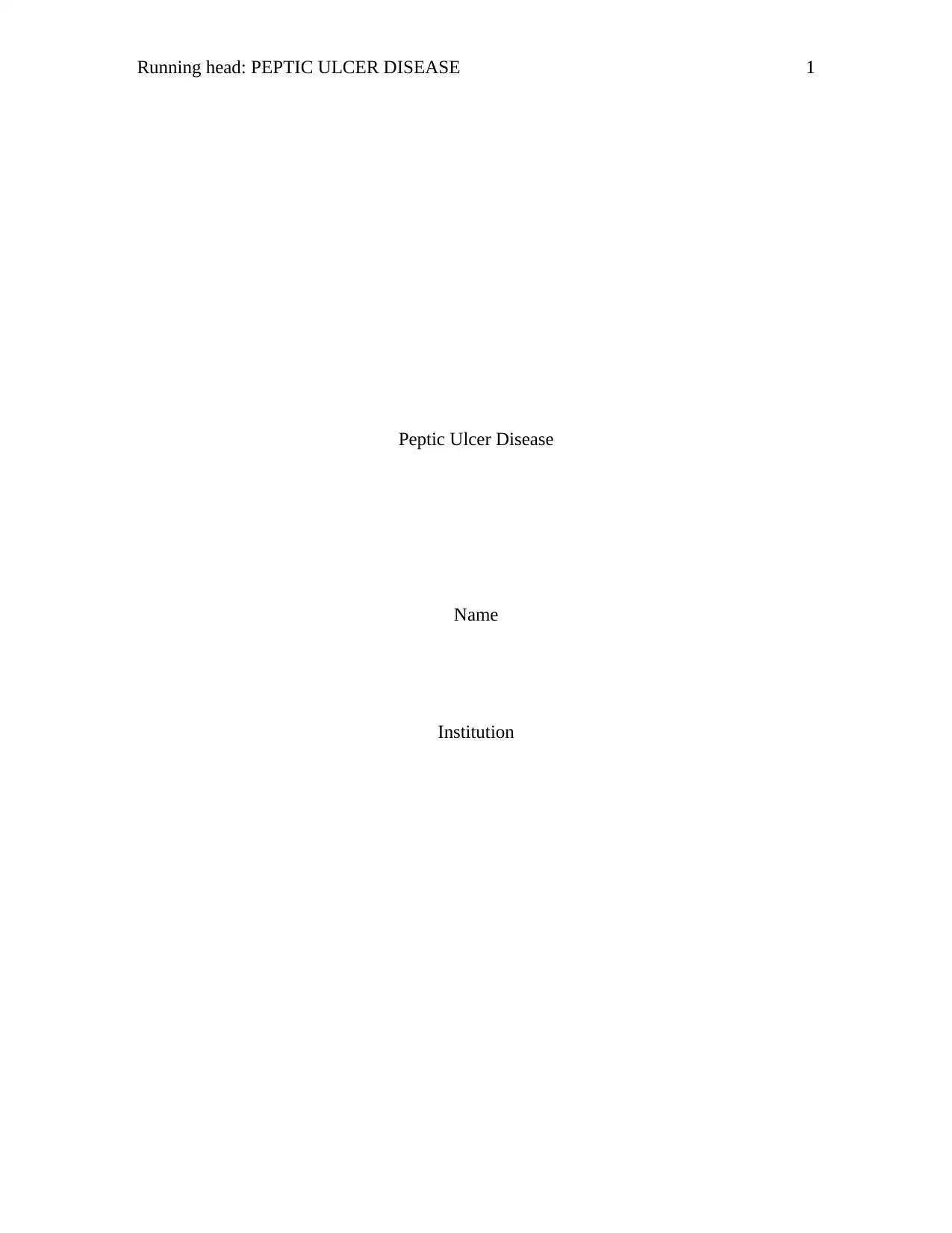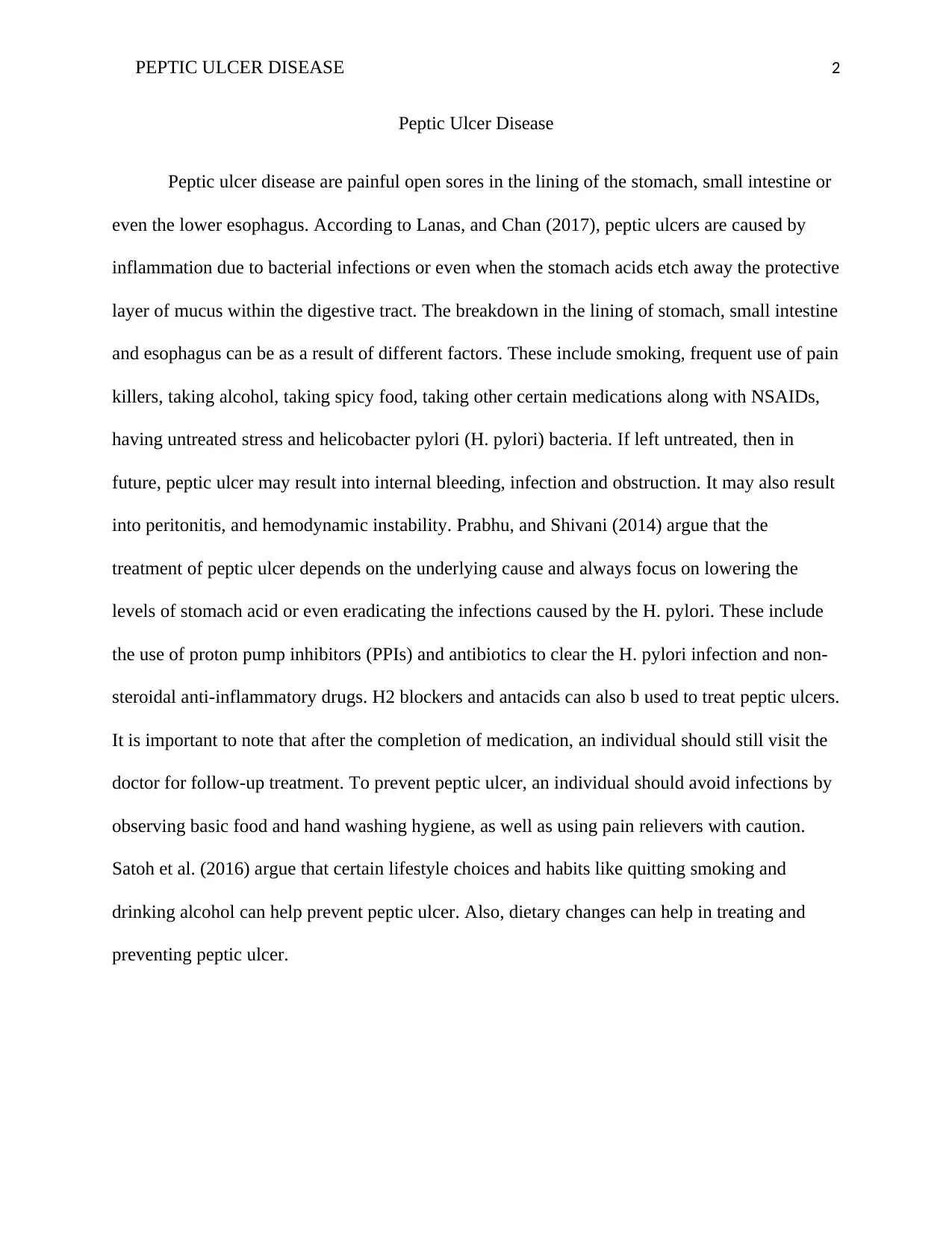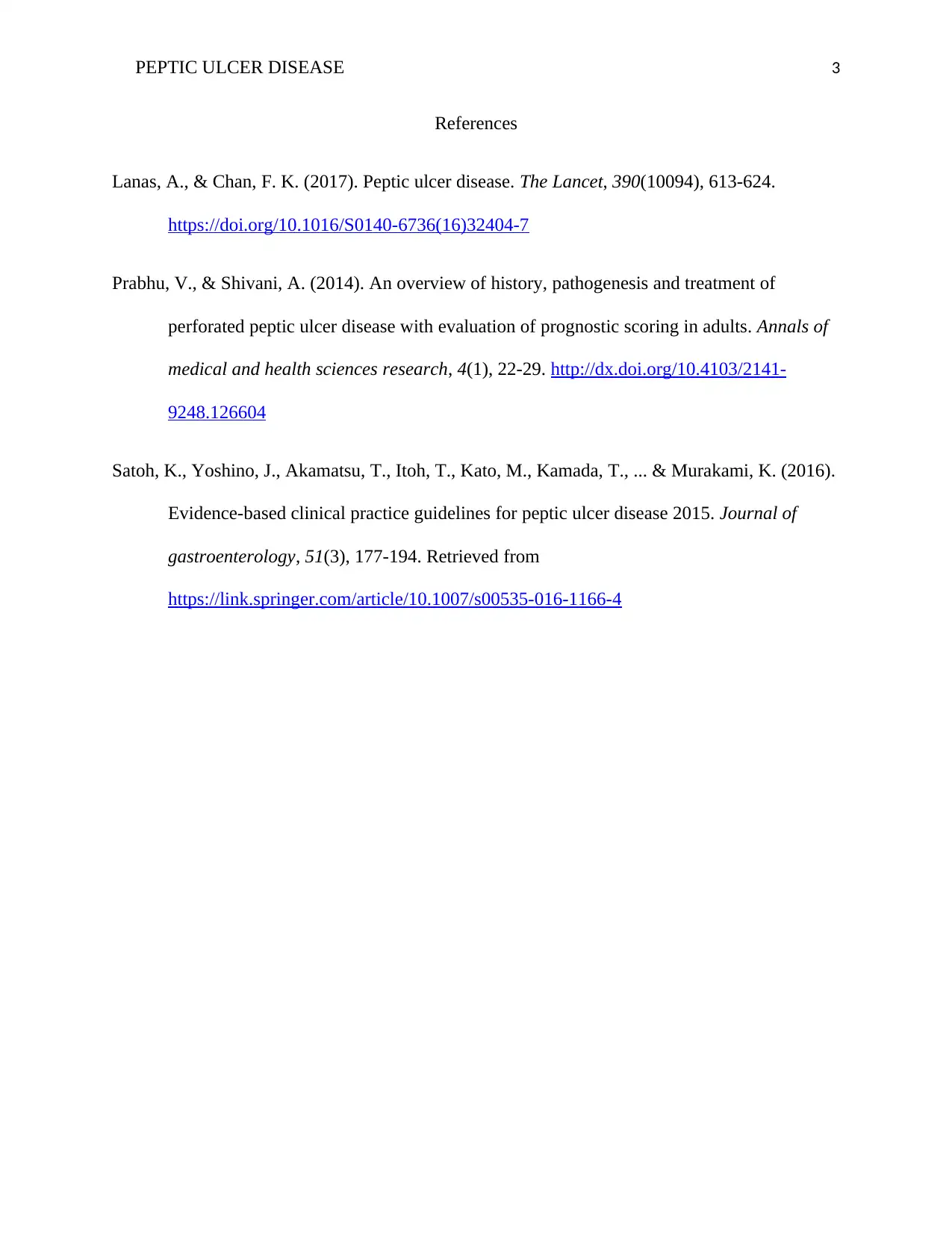Comprehensive Report on Peptic Ulcer Disease: A Detailed Analysis
VerifiedAdded on 2022/11/07
|3
|479
|42
Report
AI Summary
This report provides a comprehensive overview of peptic ulcer disease, covering its causes, treatments, and preventive measures. The report begins by defining peptic ulcers as painful sores in the stomach, small intestine, or esophagus, often resulting from bacterial infections or erosion of the protective lining. It delves into the various factors contributing to the development of peptic ulcers, including smoking, excessive use of painkillers, alcohol consumption, certain medications, stress, and the presence of Helicobacter pylori (H. pylori) bacteria. The report then discusses the treatments for peptic ulcers, which primarily focus on reducing stomach acid levels and eradicating H. pylori infections through the use of proton pump inhibitors (PPIs), antibiotics, H2 blockers, and antacids. It emphasizes the importance of follow-up treatment after medication completion. Finally, the report highlights preventive measures, such as maintaining good hygiene, using pain relievers cautiously, and adopting lifestyle changes like quitting smoking and limiting alcohol consumption. The report references several scholarly articles to support its findings and provides a well-rounded understanding of peptic ulcer disease.
1 out of 3










![[object Object]](/_next/static/media/star-bottom.7253800d.svg)